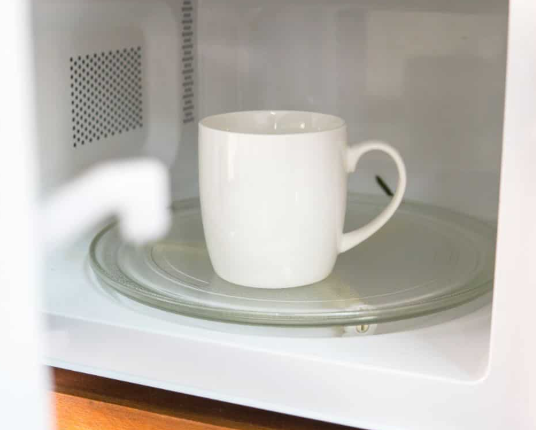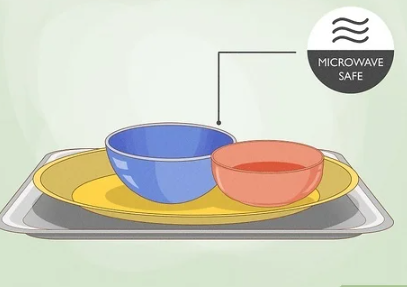When considering cookware or tableware for the microwave, one common question is whether 100% ceramic items are truly safe. In this article, we’ll dive deep into the microwave compatibility of ceramic products, how to test them for safety, and tips for choosing ceramicware that ensures optimal performance and safety.
100% ceramic refers to items made purely from clay, fired at high temperatures to achieve a hardened, durable state. Unlike composite materials that combine ceramics with other elements like metals or plastics, true 100% ceramic lacks coatings, metallic elements, or mixed materials, making it inherently non-reactive and heat resistant.
Is 100% Ceramic Microwave Safe?
Yes, most 100% ceramic items are microwave-safe because of their:
- Non-metallic composition: Ceramics lack metallic components, so they do not spark or overheat in a microwave.
- Heat resistance: Properly fired ceramics can withstand high temperatures without cracking.
- Even heating: Ceramics are excellent at distributing heat evenly, reducing the risk of hot spots.
However, not all ceramic products labeled as “microwave-safe” are created equal. Poor-quality ceramics or items with certain glazes might still pose risks.
How to Test If Ceramic Is Microwave Safe?

FDA’s Guidelines on Microwave-Safe Materials
The Food and Drug Administration (FDA) has regulated the manufacture of microwave ovens since 1971. Microwave oven manufacturers are required to certify their products and meet safety performance standards created and enforced by the FDA to protect the public health. Based on current knowledge about microwave radiation, the Agency believes that ovens that meet the FDA standard and are used according to the manufacturer’s instructions are safe for use.
Microwave ovens are a convenient means to heat food and are generally safe when used correctly. Microwave ovens heat food using microwaves, a form of electromagnetic radiation similar to radio waves. Microwaves have three characteristics that allow them to be used in cooking: they are reflected by metal; they pass through glass, paper, plastic, and similar materials; and they are absorbed by foods.
A device called a magnetron inside the oven produces microwaves. The microwaves reflect off the metal interior of the oven and cause the water molecules in food to vibrate. This vibration results in friction between molecules, which produces heat that cooks the food.
Microwave Use and Safety from GE Appliances
∎ Do not store anything directly on top of the microwave oven surface when the microwave oven is in operation.
∎ Do not operate this appliance if it has a damaged power cord or plug, if it is not working properly, or if it has been damaged or dropped.
∎ Do not cover or block any openings on the appliance.
Follow this simple test to determine if your ceramic is truly safe for microwave use:

- Fill with water: Place the ceramic item in question in the microwave and fill it halfway with water.
- Heat for 1 minute: Microwave on high for one minute.
- Check the temperature:
- If the ceramic remains cool while the water heats up, it is microwave-safe.
- If the ceramic becomes hot, it may contain non-microwave-safe materials or glazes.
Potential Risks of Using 100% Ceramic in Microwaves
Despite their inherent heat resistance, ceramics might still present issues under certain conditions.
| Potential Risk | Explanation | Solution |
|---|---|---|
| Cracks or Chips | Damaged ceramics may break further under microwave heat. | Discard chipped or cracked ceramicware. |
| Non-microwave-safe Glazes | Certain decorative glazes may contain metals. | Look for the “microwave-safe” label. |
| Thermal Shock | Sudden temperature changes can cause cracking. | Avoid placing cold ceramicware in a hot microwave. |
How to Choose Microwave-Safe Ceramic
When purchasing ceramicware, consider these tips to ensure safety and longevity:
- Look for labels: Choose products explicitly labeled as “microwave-safe.”
- Inspect the glaze: Avoid overly shiny or metallic-finished glazes.
- Check the weight: Heavier ceramics may retain heat excessively.
- Buy from reputable brands: Trusted manufacturers are more likely to produce high-quality, tested ceramicware.
FAQs on Microwave Safety for Ceramic
Q1: Can I microwave ceramic plates with gold trim?
No. Gold trim or metallic decorations will spark in the microwave, posing a fire hazard.
Q2: Why does my ceramic cup get hot in the microwave?
It may contain non-microwave-safe materials, such as impurities in the clay or glaze.
Q3: How can I extend the life of my microwave-safe ceramics?
Avoid extreme temperature changes and always handle with care to prevent chipping.

